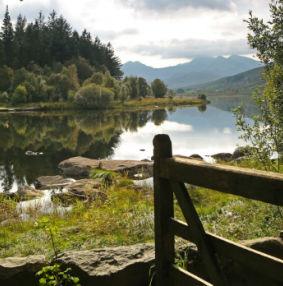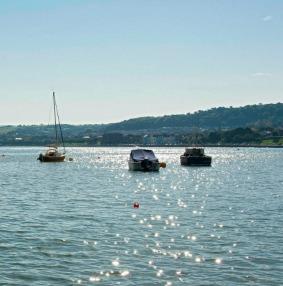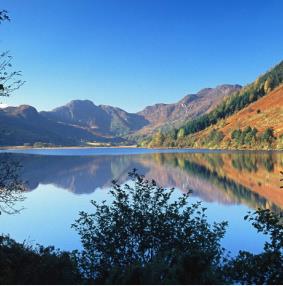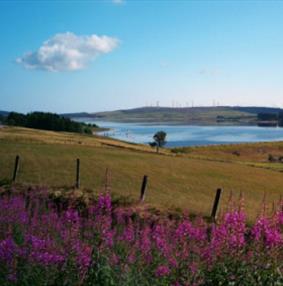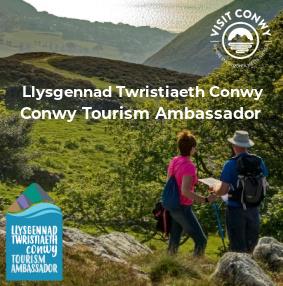My Planner0
To build your own Itinerary, click  to add an item to your Itinerary basket.
to add an item to your Itinerary basket.
Already saved an Itinerary?


Tu Hwnt i'r Bont
You are here: Home > Things to Do > The North Wales Way > The North Wales Way - Castles and Historic Places
Starting at the Wales/England border and running westwards for 75 miles/120km to the tip of Anglesey, The North Wales Way is one of three Wales Way touring routes created to guide and inspire visitors. Each ‘Way’ has been designed as a fluid experience, not a route that’s set in stone, with plenty of diversions off the main path that allow you to explore further and deeper.
This four-day itinerary will introduce you to a host of historic buildings and ancient sites – each alive with millennia of myths, legends and heritage.
Day 1
Begin your journey at Erddig near Wrexham. See two sides of life in this revealing 17th-century mansion, now in the care of the National Trust, by exploring the opulent owners’ rooms and simple servants’ quarters ‘below stairs’. Next pay a visit to St...Read More
Starting at the Wales/England border and running westwards for 75 miles/120km to the tip of Anglesey, The North Wales Way is one of three Wales Way touring routes created to guide and inspire visitors. Each ‘Way’ has been designed as a fluid experience, not a route that’s set in stone, with plenty of diversions off the main path that allow you to explore further and deeper.
This four-day itinerary will introduce you to a host of historic buildings and ancient sites – each alive with millennia of myths, legends and heritage.
Day 1
Begin your journey at Erddig near Wrexham. See two sides of life in this revealing 17th-century mansion, now in the care of the National Trust, by exploring the opulent owners’ rooms and simple servants’ quarters ‘below stairs’. Next pay a visit to St Winefride’s Well in Holywell (otherwise known as the ‘Lourdes of Wales’). Though the elaborate chapel that stands here today dates from the 15th century, pilgrims have been visiting the site for over 1,000 years. Then make your way to Rhuddlan Castle. This 13th-century fortress is a notable feat of engineering both for its innovative concentric ‘walls within walls’ design and the fact that its builders diverted the River Clwyd from its meandering route to provide access via the water.
 Rhuddlan Castle
Rhuddlan Castle
 St Winefride’s Well, Holywell
St Winefride’s Well, Holywell
Suggested overnight: Rhuddlan
Day 2
Follow the A55 Expressway to Llandudno and Great Orme Bronze Age Copper Mine on the rugged headland above the town. With a network of tunnels and surface works dating back more than 4,000 years, it’s the largest known prehistoric mine in the world. Carry on along the coast to Conwy to experience the medieval might of Conwy Castle (a World Heritage Site) and explore Plas Mawr, Britain’s most perfectly preserved Elizabethan townhouse. Next, head along the green Vale of Conwy to Gwydir Castle in Llanrwst, one of the most impressive Tudor mansions in Wales. Look out for the wood-panelled Dining Room, returned to Gwydir after a long stay in the United States as part of media tycoon William Randolph Hearst’s collection.
 Great Orme mines
Great Orme mines
 Gwydir Castle
Gwydir Castle
Suggested overnight: Betws-y-Coed
Day 3
Make your way to the Isle of Anglesey, crossing the historic Menai Suspension Bridge. First, visit Aberlleiniog Castle between Beaumaris and Penmon. Originally raised in the 11th century, it’s a hidden gem of a fortress sitting in the heart of a leafy woodland nature reserve. Next head to Cemaes on the north coast and walk to the remains of Victorian Porth Wen Brickworks, an atmospheric reminder of Anglesey’s industrial past. Then it’s on to Pentre Feilw Standing Stones near Holyhead. Reaching 10ft/3m in height, the origins of this pair of Bronze Age monoliths are shrouded in mystery, though legend says they were once part of a much larger stone circle.
Suggested overnight: Holyhead or Trearddur Bay
Day 4
Travel back to the mainland to explore Caernarfon Castle. With its soaring octagonal towers and impenetrable curtain walls, it’s easy to see why it’s considered one of the world’s most impressive medieval buildings (and a World Heritage Site to boot).
 Caernarfon Castle
Caernarfon Castle
Carry on to Llanberis to see Llafn y Cewri (Blade of the Giants) a 20ft/6m iron sculpture of a sword commemorating the Princes of Gwynedd, Wales’s former rulers. Then take a walk along the shores of Llyn Padarn and past Dolbadarn Castle, one of our finest native-built fortresses. Finally, travel via the rugged Llanberis Pass and Nant Gwynant to Craflwyn and the National Trust’s Dinas Emrys, a rugged, rocky hill steeped in myth and legend (watch out for dragons).
Suggested overnight: Beddgelert
Read Less© Conwy County Borough Council. All Rights Reserved







